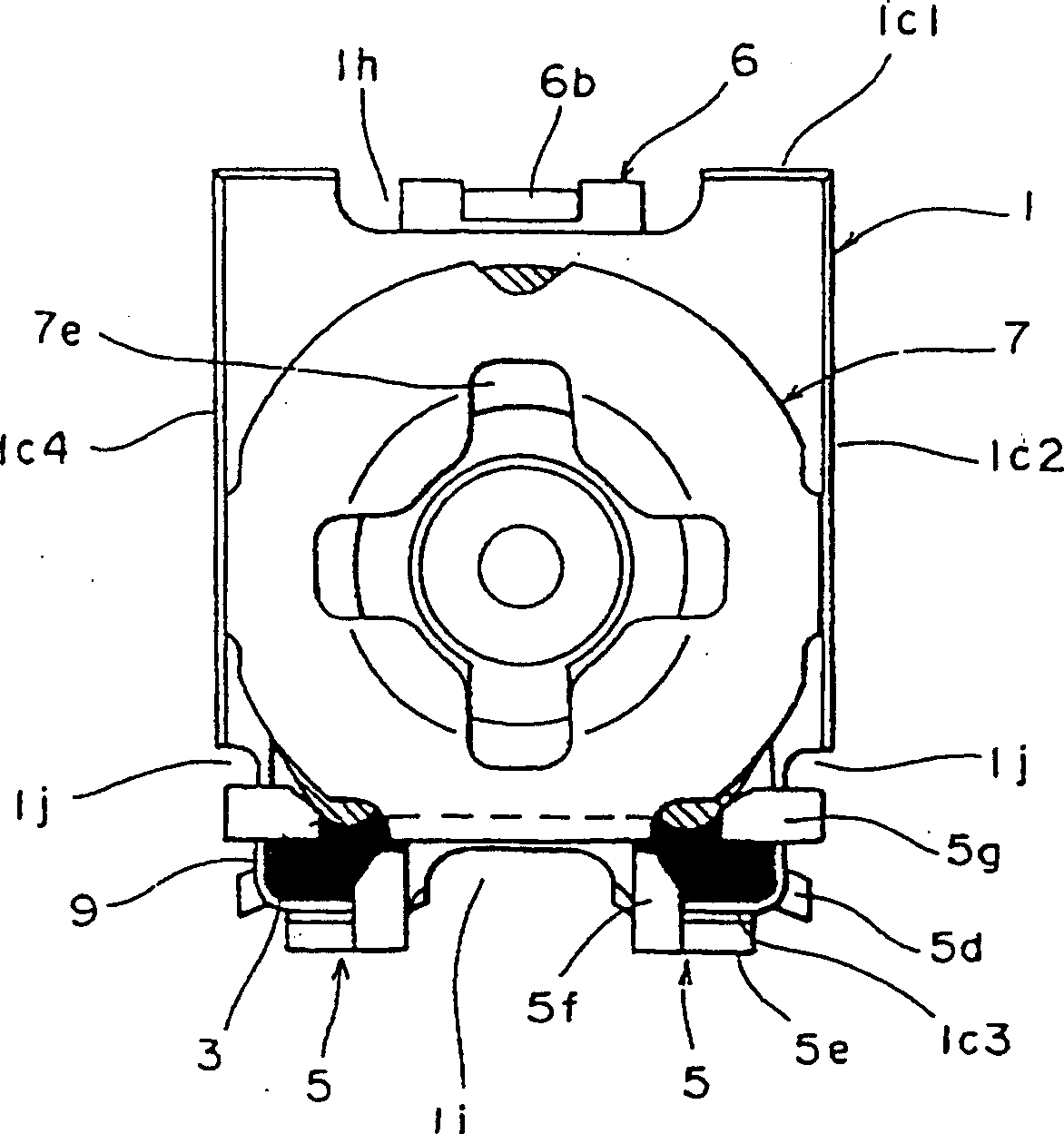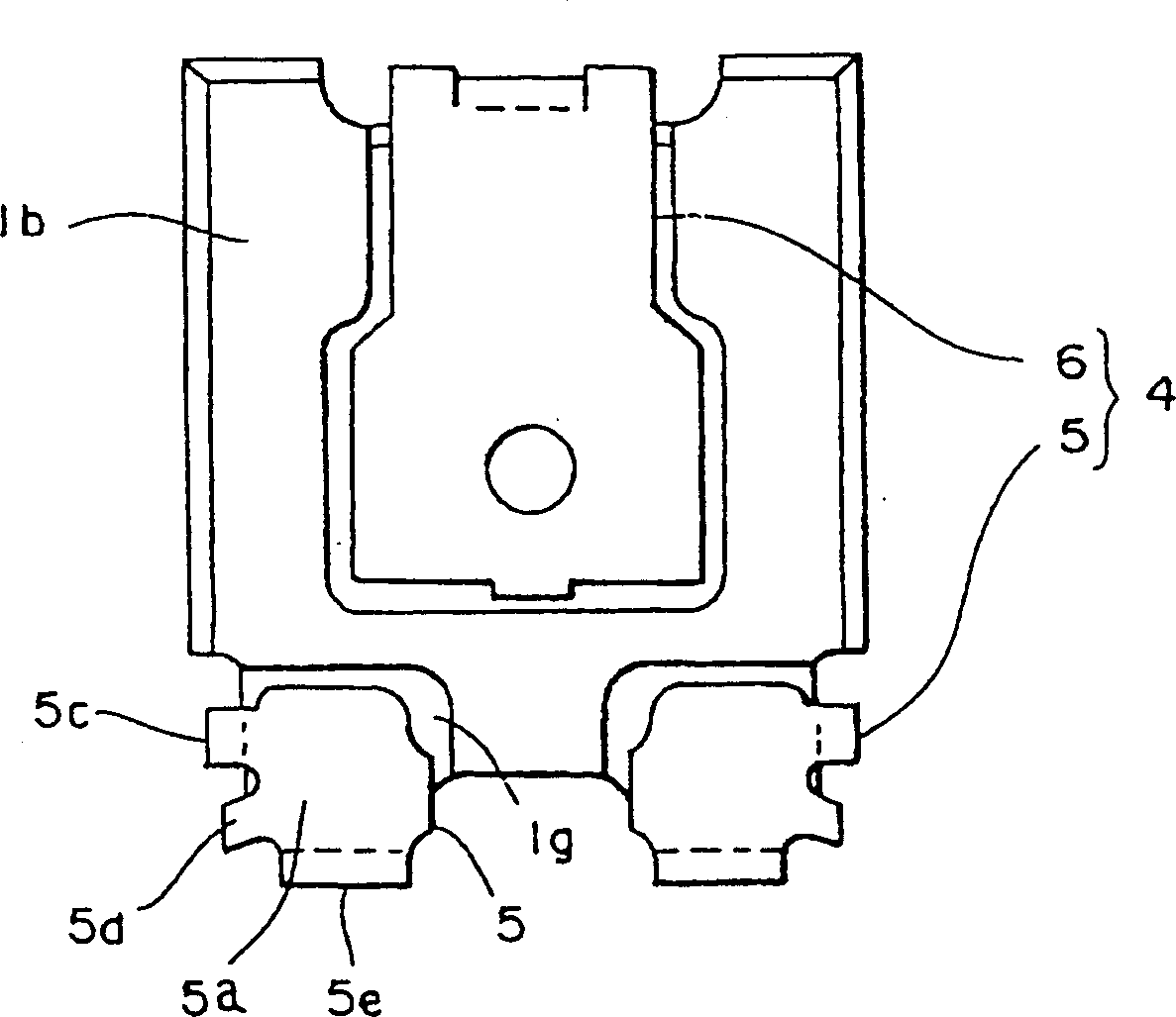Sheet like variable resistor having metallic terminals
A resistor and variable technology, applied in the direction of sliding contact resistors, resistor terminals/electrodes, manufacturing resistor chips, etc., can solve the problem of non-volatile, unstable mounting state of chip variable resistors, not easy to volatilize, etc. question
- Summary
- Abstract
- Description
- Claims
- Application Information
AI Technical Summary
Problems solved by technology
Method used
Image
Examples
Embodiment Construction
[0049] Such as Figure 1 to Figure 10 As shown, the insulating substrate 1 is made of ceramic material, and it is fired into a roughly rectangular shape. 3 ), has an upper surface 1a, a lower surface 1b, surrounding side surfaces 1c1-1c4, and a circular hole 1d penetratingly provided at the center from the upper surface 1a to the lower surface 1b. In the central portion of the upper surface 1a, a substantially circular concave portion 1e surrounding the hole 1d is provided, and in the approximately central portion of the lower surface 1b, a rectangular shallow groove-shaped groove portion 1f is provided. open to the outside.
[0050] On one side facing side 1c1 and side 1c3 ( figure 2 In the upper and lower directions), a substantially rectangular notch 1h with a large width and a substantially rectangular notch 1i with a narrow width are respectively provided, and the opposite sides 1c2 and 1c4 ( figure 2 In the left-right direction), there are a pair of rectangular notc...
PUM
 Login to View More
Login to View More Abstract
Description
Claims
Application Information
 Login to View More
Login to View More - R&D
- Intellectual Property
- Life Sciences
- Materials
- Tech Scout
- Unparalleled Data Quality
- Higher Quality Content
- 60% Fewer Hallucinations
Browse by: Latest US Patents, China's latest patents, Technical Efficacy Thesaurus, Application Domain, Technology Topic, Popular Technical Reports.
© 2025 PatSnap. All rights reserved.Legal|Privacy policy|Modern Slavery Act Transparency Statement|Sitemap|About US| Contact US: help@patsnap.com



